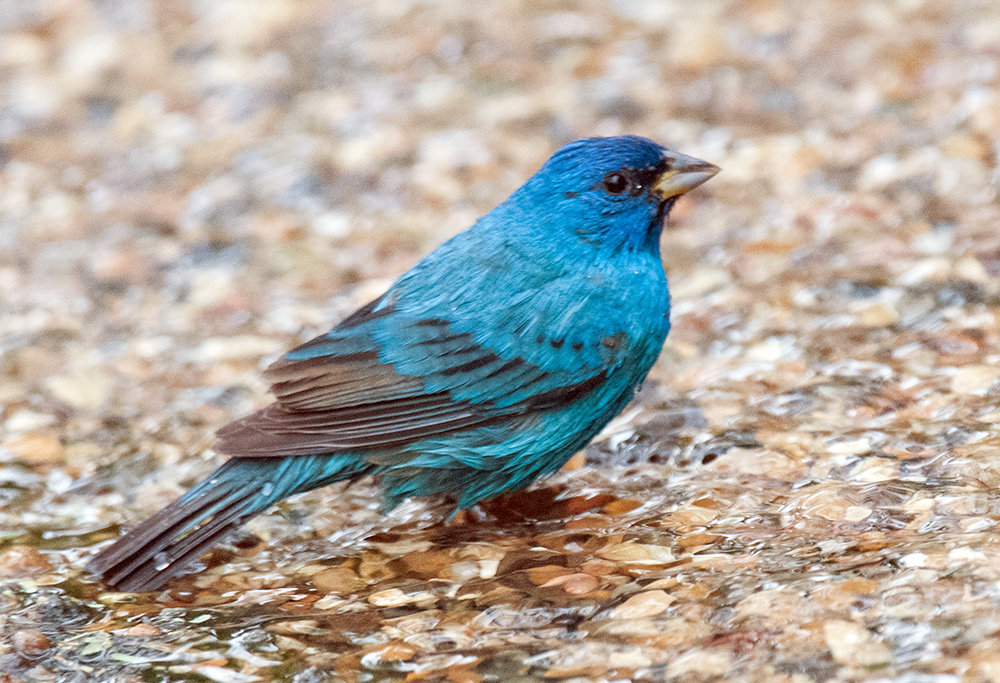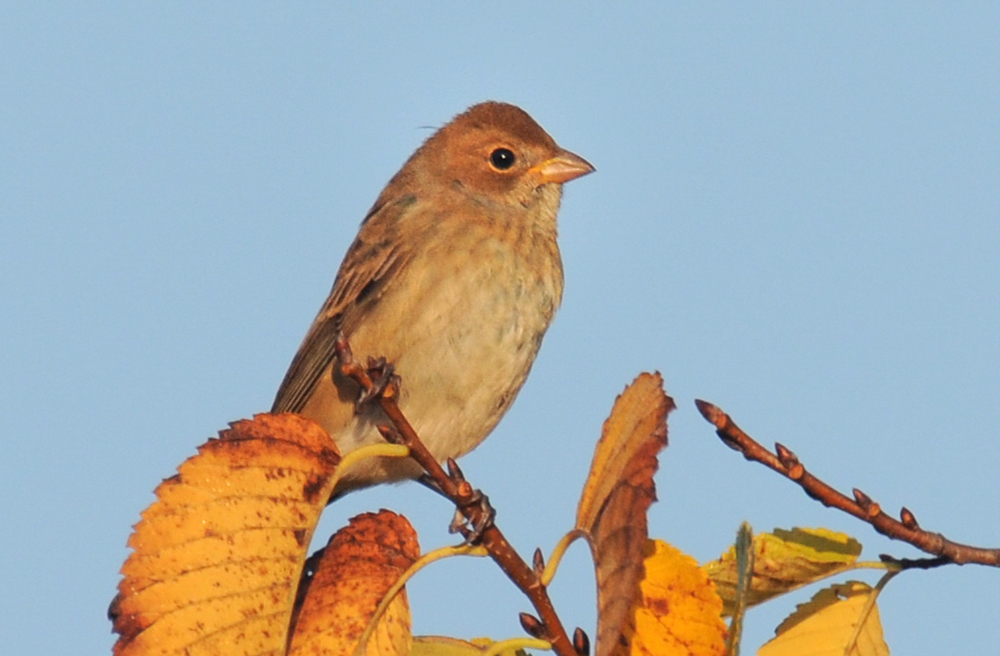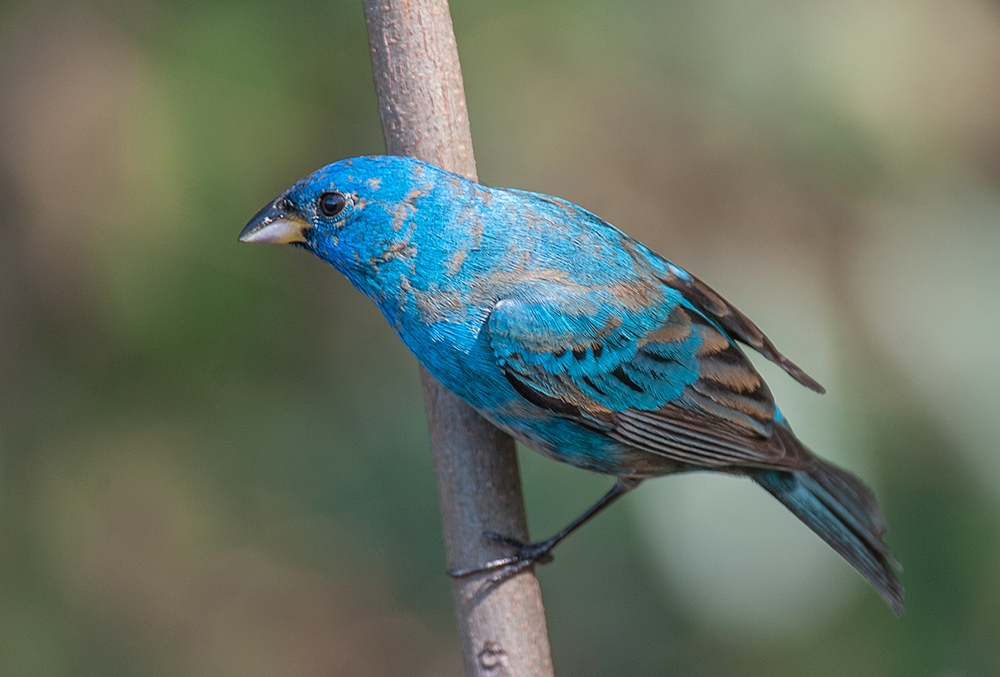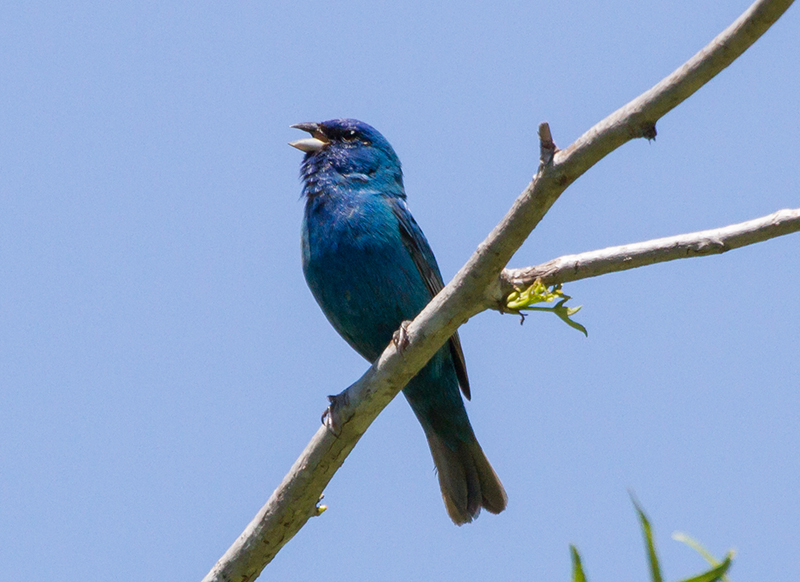| Early Spring Date: | April 24 |
| Late Spring Date: | May 25 |
| Best Dates to See in Spring: | April 30 - May 12 |
Spring: Indigo Buntings are common breeding birds in the Washington metro area, but they are not common at Monticello Park. On average, only about 17 show up each spring, and during some years, fewer than 10. The best time to look for them at Monticello is during the first two weeks of May, but you will have a better chance to see one during this period if you visit Occoquan Bay National Wildlife Refuge or areas along the C&O Canal Towpath where they nest. They winter in Central America and the Caribbean.
Fall: Indigo Buntings are rarely seen at Monticello during fall migration.
Where to See Them in the Park
Indigo Buntings at Monticello usually forage in low vegetation. Their preferred habitat is brushy open areas, often next to forests. They frequently go into the stream to bathe and drink, especially the portion of the stream in the front of the park.
Physical Description

From a distance, a male Indigo Bunting looks all blue. If you look closely, the head is slightly darker than the body, and the wings and the tail have black feathering. The bill is large and light-colored.

Females can be difficult to identify. From a distance, they look all brown and seem to have few fieldmarks. They look like sparrows with large bills. The breast is streaked, but not boldly. They have blue edges to some of their feathers, but this can be difficult to see in the field. They are smaller than female Brown-headed Cowbirds, who are also plain brown birds with large bills and few noticeable fieldmarks.

Occasionally, immature males visit Monticello. They are blotchy and have not yet replaced all of their brown feathers with blue ones.
Vocalizations

The song of the Indigo Bunting varies a lot. It is loud and lively, and usually contains paired notes. During the breeding season, adult males like to sing from the tops of trees or from an exposed branch. The most common call note is a short chip.
Hear the vocalizations of the Indigo Bunting.Notes
The Indigo Bunting is in the family Cardinalidae, found only in the New World. Its closest relatives among the birds who visit Monticello are Rose-breasted Grosbeaks, Scarlet and Summer Tanagers, and Northern Cardinals. Indigo Buntings are not related to the birds called buntings in Europe and Asia.
Origin of Names
Common Names: Indigo from the plumage. The origin of bunting is unknown. It could be from a Welsh word for plump, a double diminutive of the French word bon, or a German word for speckled. The bunting from which the bird gets its name was not the Indigo.
Genus Name: Passerina means sparrow-like.
Species Name: Cyanea means blue.
Indigo Bunting video footage
Return to the Index
